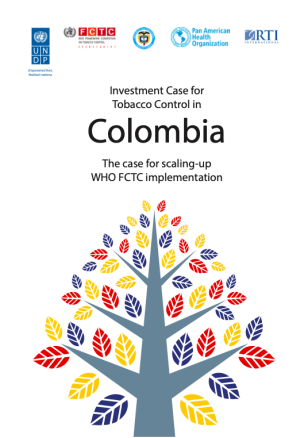Investment Case for Tobacco Control in Colombia

Investment Case for Tobacco Control in Colombia
28 de Enero de 2021
Every year, tobacco use kills an estimated 34,809 Colombians, with 44 percent of these deaths among people under age 70. More than 6,300 of these lives lost are due to secondhand exposure to tobacco smoke, and 154 (2.4 percent) of those deaths are among children younger than 15. In 2017, tobacco cost the Colombia economy 17 trillion Colombian pesos (COP), equivalent to 1.8 percent of GDP. These costs include a) COP 6.5 trillion in annual healthcare expenditures, and b) COP 10.6 trillion in annual lost productive capacities due to premature mortality, disability, and workplace smoking.
The investment case findings demonstrate that implementing or intensifying four WHO FCTC interventions would, over the next 15 years save 154,450 lives and reduce the incidence of disease, avert COP 58 trillion in economic losses, and lead to COP 22.3 trillion in savings through avoidance of tobacco-attributable healthcare expenditures. The economic benefits (COP 58 trillion) significantly outweigh the costs (COP 0.19 trillion). Increasing cigarette taxes and enacting larger graphic warning labels would generate the highest ROI (659:1).
This tobacco control investment case was developed jointly by UNDP, the WHO FCTC Secretariat, WHO and the Ministry of Health as part of the FCTC 2030 project.

 Locations
Locations